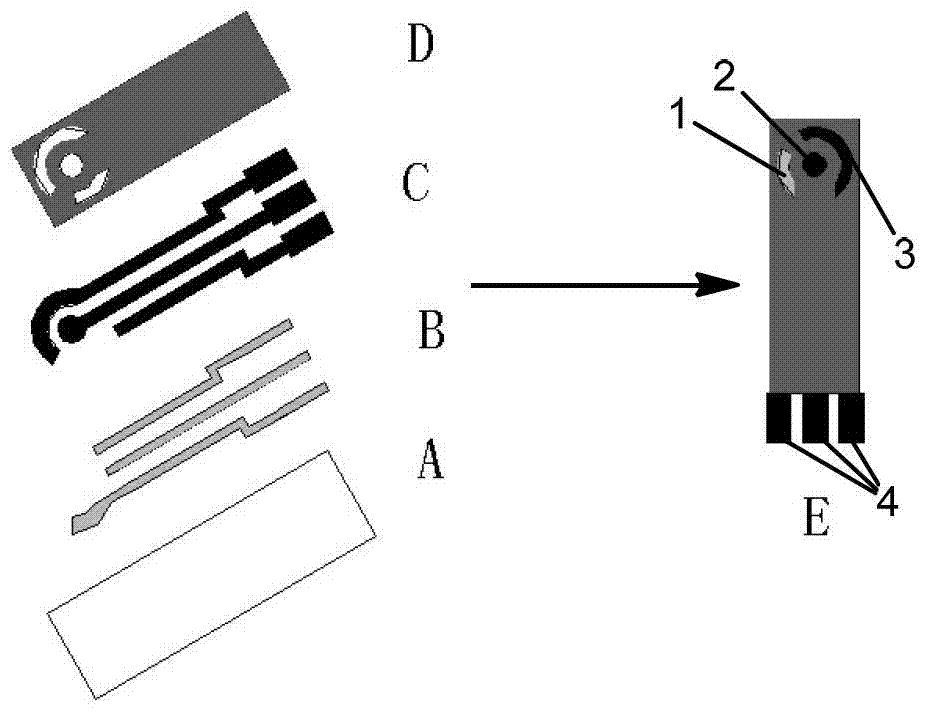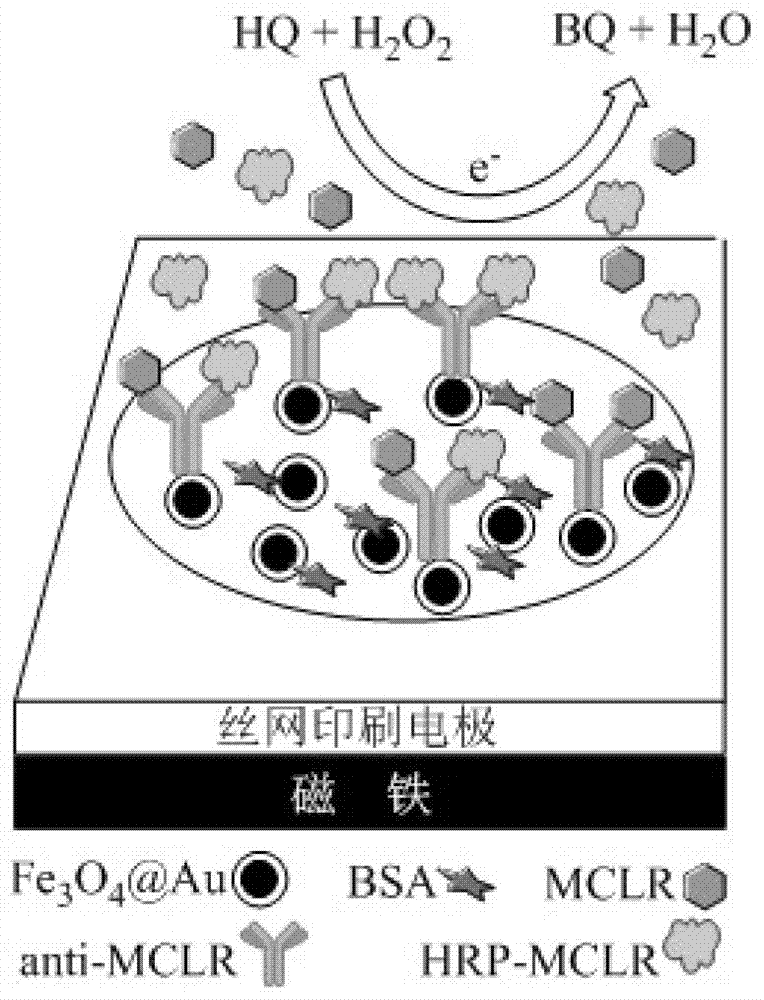Preparation and detection methods of screen-printed electrode immunosensor for rapidly detecting microcystin
A screen-printed electrode and immunosensor technology, which is applied in the field of screen-printed electrode immunosensors modified by composite magnetic nanomaterials, can solve problems such as methods that have not yet been published, and achieve the effects of low cost, simple and fast method, and high sensitivity
- Summary
- Abstract
- Description
- Claims
- Application Information
AI Technical Summary
Problems solved by technology
Method used
Image
Examples
Embodiment 1
[0020] Structure and preparation process of screen-printed electrodes
[0021] see figure 1 , The screen printing electrode used in the present invention is to screen print three electrodes on the polyvinyl chloride film: one is a silver pseudo-reference electrode 1, one is a working electrode 2, and one is a counter electrode 3. The other end of the electrode is the lead terminal 4 of the three electrodes. On the substrates other than the three electrode lead terminals and the three electrodes, an insulating layer D printed with insulating paste is also covered.
[0022] Firstly, the silver paste was slowly stirred evenly, prepared by screen printing technology and printed separately on a polyvinyl chloride film with a thickness of 0.5mm ( figure 1 A), put it in an oven and dry it to make a semi-annular reference electrode and a conductive base rail ( figure 1 B); Then print the semi-annular carbon counter electrode, the circular working electrode and the lead wires of the...
Embodiment 3
[0026] Embodiment 3: the method for detecting microcystin
[0027] When the microcystin electrochemical sensor of the present invention is applied, a potentiostat is required. First, add 10 μL of MCLR standard solutions of different concentrations and 10 μL of 10 mg / L MCLR-HRP dropwise onto the surface of the immunological working electrode, incubate at room temperature for 20 min, rinse with secondary water, and blow dry carefully with nitrogen; then, the reacted electrode Add 1mmol / L H 2 o 2 and 0.1mol / L PBS (pH7.0) of 1mmol / L HQ, reacted for 20s, and measured by differential pulse voltammetry (DPV), and obtained a standard curve of MCLR and oxidation peak current. Then the water samples were detected by the same method, and the concentration of MCLR in the water samples was obtained by comparing with the standard curve. The potential scanning range is -0.2V to 0.8V, the pulse amplitude is 50mV, and the pulse width is 50ms.
PUM
 Login to View More
Login to View More Abstract
Description
Claims
Application Information
 Login to View More
Login to View More - R&D
- Intellectual Property
- Life Sciences
- Materials
- Tech Scout
- Unparalleled Data Quality
- Higher Quality Content
- 60% Fewer Hallucinations
Browse by: Latest US Patents, China's latest patents, Technical Efficacy Thesaurus, Application Domain, Technology Topic, Popular Technical Reports.
© 2025 PatSnap. All rights reserved.Legal|Privacy policy|Modern Slavery Act Transparency Statement|Sitemap|About US| Contact US: help@patsnap.com


